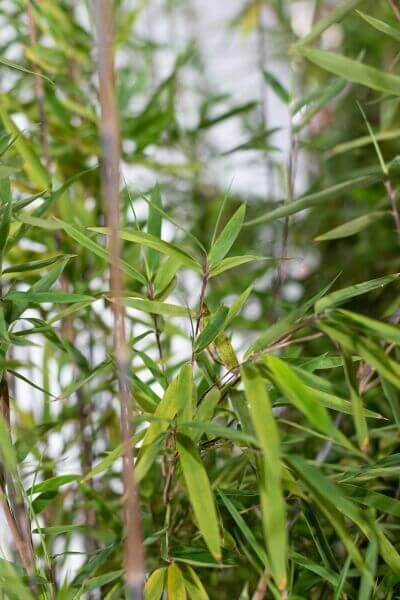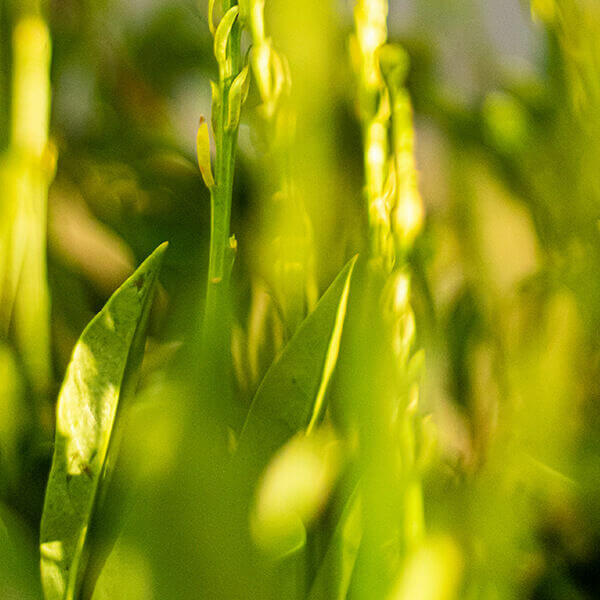Best Hedging Plants For Coastal Areas
Best Hedging Plants For Coastal Areas
Blog Article
Hedge Plants For Summer Color
Enhance your garden's allure with lush hedge ranges such as Yew (Taxus), Thuja, Laurel, Photinia, and Bamboo, commemorated for their structural stability and ecological benefits.
Yew and Thuja supply evergreen coverage and winter season durability, while Laurel provides rapid growth and broad, aromatic leaves.
Photinia adds seasonal beauty with its vibrant red foliage, and Bamboo lends a low-maintenance, peaceful atmosphere.
These hedges enhance air quality, reduce sound, and develop tranquil, private areas.
Correct planting, spacing, and maintenance make sure energetic growth and eco-friendly consistency.
Explore how these rich ranges can raise your garden's beauty and well-being.
Key Takeaways
Transform Your Garden With Lush Hedge Varieties
- Select Yew for its dense, evergreen development and unparalleled longevity.
- Select Laurel for its quick development and broad leaves, ensuring quick privacy.
- Select Photinia for its lively seasonal foliage, which turns a striking dark red.
- Utilize Bamboo for a low-maintenance, winter-hardy hedge with aesthetic appeal.
- Space plants 2-3 per meter and prune regularly for ideal development and health.
Popular Hedge Plants
When transforming a garden with lush hedge varieties, it's necessary to consider popular hedge plants such as Yew, Thuja, Laurel, and Photinia due to their distinct attributes and advantages.
Yew (Taxus) is extremely respected for its longevity and thick, green growth, making it a prime choice for enduring landscapes.
Thuja is noted for its evergreen foliage and robust winter resilience.
Photinia adds seasonal vibrancy with red leaves that darken over time, creating vibrant visual appeal.
Laurel uses quick development and aromatic, broad leaves, suitable for quick privacy.
Additionally, Bamboo is an outstanding choice for ambiance, offering a low-maintenance, winter-hardy option that improves the garden's aesthetic with its elegant, swaying canes.
These choices deal with a range of horticultural requirements and choices.
Benefits of Garden Hedges
Garden hedges use a plethora of benefits, making them an important addition to any landscape. These natural barriers are affordable to carry out and supply considerable wind protection, enhancing air flow and contributing to noise reduction. The dense foliage of hedges like Thuja and Beech makes sure personal privacy by obstructing exposure, producing a secluded and tranquil environment.
Hedges also play a crucial role in microclimate regulation, offering a steady environment that fosters plant development and lessens temperature variations. Their intricate leaf structures filter toxins, improving air quality and contributing to a healthier garden ecosystem.
Moreover, hedges excel in sound reduction, absorbing and deflecting acoustic waves to lower ambient sound levels. This double performance of offering both acoustic and visual personal privacy improves the general tranquility and visual appeal of any garden.
Planting and Maintenance Tips
For an effective hedge, careful preparation of the planting area is important. Ensure the soil has appropriate pH and drain to support strong root development.
Space the plants properly for the picked species. Water the hedge often throughout its preliminary growth phase, changing as required with seasonal changes.
Carry out a systematic insect control and illness prevention method, utilizing chemical or organic treatments when needed. Frequently inspect for aphids, mites, and fungal infections.
Apply mulch to keep wetness and reduce weeds. Seasonal pruning promotes dense development and air blood circulation, necessary for plant health.
Following these guidelines will help you cultivate a vibrant, well-kept hedge that enhances the beauty of your garden.
Spacing and Cutting Guidelines
Spacing and Cutting Guidelines
Appropriate spacing and trimming are important for cultivating healthy, aesthetically appealing hedges. Sufficient spacing makes sure each plant gets enough nutrients, light, and air flow.
Follow these standards for optimum hedge upkeep:
- Spacing: Position hedge plants 2-3 plants per meter to motivate robust growth.
- Pruning Methods: Regular pruning is important for maintaining desired hedge height and shape. Trim brand-new development in summer and cut down older wood throughout winter season.
- Seasonal Care: Change cutting schedules and techniques according to seasonal requirements to make sure plant health.
- Hedge Height: Frequently monitor and trim to keep the wanted hedge height and attain consistent looks.
Sticking to these steps will ensure your hedge grows, boosting both the appeal and performance of your garden.
Selecting the Right Hedge
Choosing the Right Hedge
Picking the appropriate hedge involves evaluating elements such as fully grown height, foliage density, and ecological resilience. Successful hedge plant choice needs comprehending each types' growth characteristics and site-specific versatility.
For example, Yew (Taxus) offers exceptional longevity and dense development, while Thuja is noteworthy for its winter season strength. In addition, considering maintenance requirements is crucial; fast-growing types like Laurel or Privet demand routine trimming, whereas low-maintenance options like Bamboo or Ivy may be preferable for those looking for minimal maintenance.
Environmental elements such as soil type, light availability, and wetness conditions should likewise assist the selection procedure. This mindful method makes sure the chosen hedges will prosper, providing both aesthetic and practical advantages to the garden landscape.
Delivery and Planting Recommendations
To guarantee your hedge plants grow, they should be provided by specialized carriers and planted quickly upon arrival.
Follow these vital actions for effective planting:
- Soil Preparation: Improve the soil with raw material to enhance drainage and nutrient content.
- Planting Depth: Produce a trench two times the width and equivalent to the depth of the root ball.
- Watering Techniques: Water thoroughly after planting, keeping the soil regularly wet but not saturated.
- Mulching: Apply a layer of mulch to maintain wetness and suppress weeds.
Consumer Assistance and Service
Given the important role of prompt assistance in horticultural pursuits, our client support group is readily available 6 days a week through telephone, e-mail, and social networks to offer expert recommendations and promptly resolve any issues. Their devotion to fast action times makes sure consumer satisfaction by resolving queries related to plant health, optimal planting methods, and maintenance schedules.

Reaction Time
6 days a week
Within two days
Within 24 hours
This thorough support group, strengthened by an outstanding 9.3/ 10 consumer ranking, highlights our commitment to enhancing the gardening experience for every single customer.
Frequently Asked Concerns
The Length Of Time Does It Take for Hedge Plants to Establish?
Hedge plants typically require one to three years to become fully developed, with the exact period differing by types and growing conditions.
Effective care during this important period is important for robust growth. Consistent watering, watchful weed control, and suitable fertilizer application are critical in promoting strong root advancement.
For instance, fast-growing types like Laurel may develop quicker, while slower-growing varieties such as Yew might take longer. Persistent maintenance accelerates the establishment procedure, resulting in dense and healthy hedges.
What Are the very best Hedge Plants for Personal Privacy?
The question of the very best hedge plants for privacy involves evaluating evergreen and deciduous alternatives.
Evergreen hedges like Thuja, Laurel, and Cypress offer year-round coverage, making sure continuous personal privacy.
In contrast, deciduous hedges such as Beech offer seasonal personal privacy, shedding leaves in colder months.
Secret maintenance ideas for privacy hedges consist website of routine trimming, fertilizing in spring, and appropriate spacing-- generally 2 to 3 plants per meter.
Additionally, constant watering and persistent weed removal are vital for promoting healthy, dense development.
Can Hedge Plants Draw In Wildlife to My Garden?
Yes, hedge plants can attract wildlife to your garden by supplying important advantages like shelter, food, and nesting sites, thereby improving local biodiversity. Yew, holly, and laurel are exceptional for attracting birds, while ivy supports a range of insects.
Nevertheless, it is very important to keep in mind that there are some drawbacks, such as increased maintenance to handle pests and routine maintenance. Carefully choosing and maintaining hedge varieties can assist balance these drawbacks and advantages, eventually fostering a lively and sustainable community in your garden.
Exist Any Flowering Hedge Plants Available?
Yes, there are flowering hedge plants offered that can boost the appeal of your garden.
For example, Elaeagnus, also understood as Olive Willow, produces fragrant white flowers in the fall, adding a touch of beauty.
Photinia, another popular option, showcases lively red leaves that mature into a rich green, producing a vibrant visual result throughout the seasons.
To ensure these plants flourish, it's necessary to practice correct pruning techniques and seasonal maintenance, such as trimming new development in the summer season and cutting back in the winter.
These measures will help preserve the health and aesthetic appeal of your flowering hedges.
How Do I Avoid Insects in My Hedge Plants?
To avoid bugs in hedge plants, use natural bug control techniques and keep proper hedge care. Introduce advantageous pests like ladybugs, which victimize damaging bugs, to create a well balanced ecosystem.
Frequently inspect your hedges for signs of infestation and immediately get rid of any afflicted parts to avoid the spread. Make sure the health of your hedges by using well balanced fertilizers and supplying adequate water.
Use mulching to keep soil moisture and appropriate spacing to minimize plant stress and promote robust growth. These practices collectively assist in decreasing bug concerns and keeping a healthy hedge.
Conclusion
In essence, picking the right hedge varieties such as Yew, Thuja, and Laurel can change any garden into a serene haven. These plants provide year-round greenery, enhance visual appeal, and deal practical advantages like sound decrease and wind security.
Proper planting techniques, accurate spacing, constant watering, and seasonal trimming are essential for optimum growth.
Trustworthy delivery services and expert consumer support ensure a smooth experience from purchase to planting, making it simpler than ever to raise your outdoor space.
Garden hedges offer a plethora of advantages, making them a valuable addition to any landscape. These natural barriers are cost-efficient to execute and provide considerable wind protection, boosting air blood circulation and contributing to noise decrease. The thick foliage of hedges like Thuja and Beech guarantees personal privacy by blocking presence, producing a peaceful and secluded environment.

Pruning Methods: Routine pruning is essential for maintaining wanted hedge height and shape. Trim brand-new development in summer season and cut back older wood during winter.
Report this page